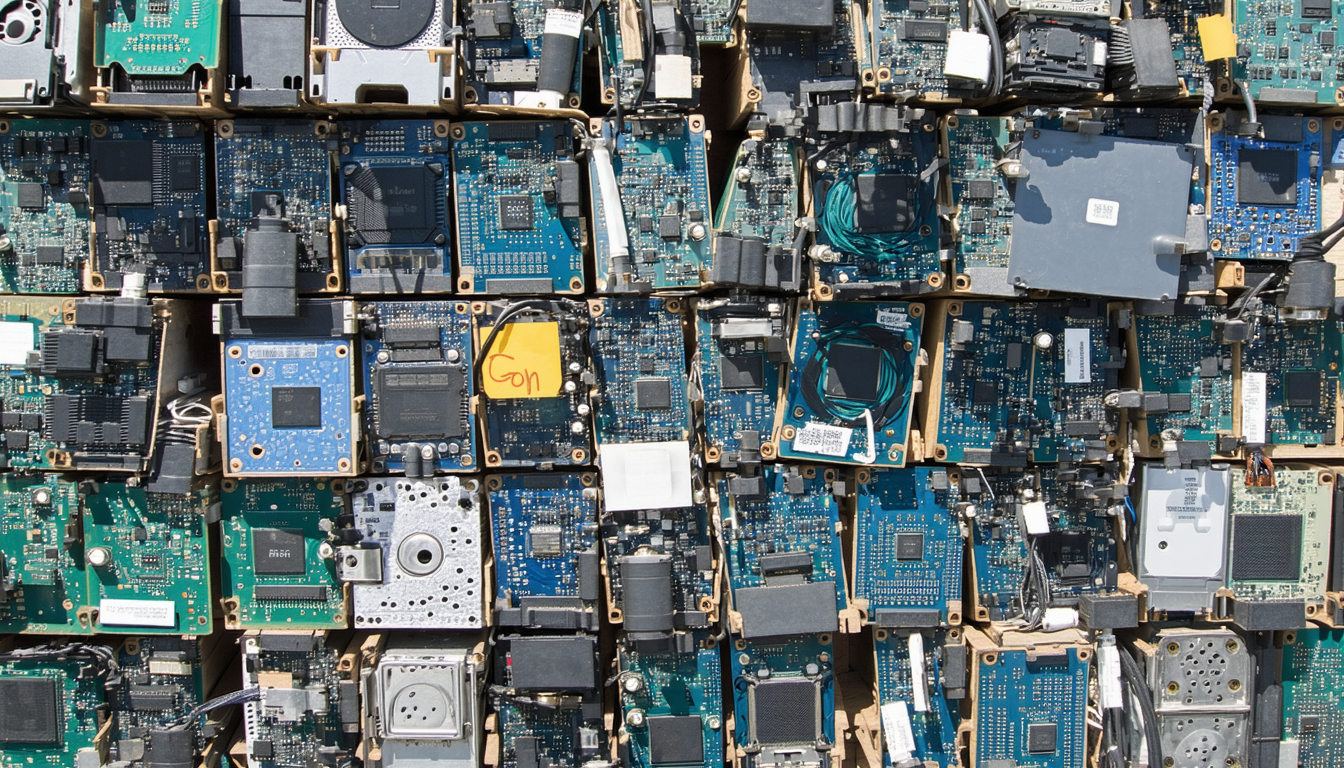Introduction
In the United States, the rapid pace of technological advancement has led to a mounting crisis: electronic waste, or e-waste. With millions of devices discarded annually, e-waste management is extraordinarily difficult to monitor and track, posing significant environmental and health risks. This article delves into the complexities of tracking e-waste, explores recent data on the issue, and examines why effective oversight remains elusive. From regulatory gaps to illegal dumping, we uncover the challenges and potential solutions to this growing problem.
The Scale of E-Waste in the United States
The U.S. generates an estimated 6.9 million metric tons of e-waste each year, according to a 2022 report by the United Nations Institute for Training and Research. This includes discarded smartphones, laptops, televisions, and other electronics laden with hazardous materials like lead and mercury. Only about 15-20% of this waste is recycled through formal channels, leaving a vast majority unaccounted for.
Many devices end up in landfills or are shipped overseas under questionable circumstances. The sheer volume of e-waste, combined with inconsistent state-level regulations, creates a fragmented system that hinders comprehensive tracking. Without a unified national policy, monitoring where e-waste goes after disposal remains a daunting task.
Why E-Waste Management Is Extraordinarily Difficult to Monitor and Track
One of the primary reasons e-waste management is extraordinarily difficult to monitor and track lies in the lack of standardized reporting mechanisms. Unlike other waste streams, such as municipal solid waste, there is no federal mandate requiring producers or consumers to report e-waste disposal data. This gap allows much of the waste to slip through the cracks.
Additionally, illegal exports complicate oversight. A 2018 study by the Basel Action Network revealed that nearly one-third of tracked U.S. e-waste shipments ended up in developing countries, often in violation of international agreements like the Basel Convention. These shipments are frequently mislabeled as “used goods,” evading scrutiny.
According to Dr. Sarah Johnson, an environmental policy expert at Stanford University, “The opaque nature of global e-waste trade makes it nearly impossible to enforce accountability. Without advanced tracking technologies and international cooperation, we’re fighting a losing battle.”
Impact on Stakeholders
The challenges of tracking e-waste have far-reaching consequences for various stakeholders. For environmentalists, improperly managed e-waste poses risks of soil and water contamination due to toxic leaks. Communities near landfills often bear the brunt of these hazards, facing health issues from exposure to harmful substances.
For businesses, particularly electronics manufacturers, the lack of clear tracking systems complicates compliance with extended producer responsibility (EPR) laws in states like California and New York. These laws require companies to fund recycling programs, but without accurate data on waste flows, implementation remains inconsistent.
Governments also struggle with enforcement. The Environmental Protection Agency (EPA) has limited authority over e-waste due to its classification as non-hazardous under federal law in many cases. This regulatory gray area leaves local authorities overwhelmed and under-resourced.
Potential Solutions and Innovations
Addressing the monitoring challenges requires a multi-pronged approach. Experts suggest several strategies to improve oversight:
- Federal Legislation: A national framework for e-waste management could standardize reporting and recycling practices across states.
- Technology Integration: Blockchain-based tracking systems could provide transparent records of e-waste from production to disposal.
- Public Awareness: Educating consumers about proper disposal methods can reduce informal recycling and illegal dumping.
- Global Partnerships: Strengthening ties with international bodies can help curb illicit exports and promote ethical recycling.
While these solutions show promise, their implementation faces hurdles like funding constraints and political resistance. Still, pilot programs in states like Washington demonstrate that coordinated efforts can yield results, with recycling rates improving by 10% over the past five years.
Analysis and Future Outlook
The difficulty in monitoring e-waste underscores broader systemic issues within waste management infrastructure. As technology evolves, so too must policies adapt to handle emerging challenges like lithium-ion battery disposal from electric vehicles. Failure to address these gaps could exacerbate environmental damage and public health risks.
On the flip side, some argue that over-regulation might stifle innovation or burden small businesses. Balancing accountability with economic considerations will be key to crafting sustainable solutions. Looking ahead, advancements in digital tracking tools offer hope for greater transparency if paired with robust enforcement.
In conclusion, while e-waste management is extraordinarily difficult to monitor and track, it is not an insurmountable problem. Through collaborative efforts between policymakers, industry leaders, and communities, the U.S. can build a more accountable system to tackle this pressing issue.
Frequently Asked Questions (FAQ)
1. Why is e-waste management so hard to track in the United States?
E-waste management is extraordinarily difficult to monitor and track due to inconsistent regulations across states, lack of federal oversight, illegal exports, and limited data on waste flows.
2. How much e-waste does the U.S. produce annually?
The U.S. generates approximately 6.9 million metric tons of e-waste each year, with only 15-20% recycled through formal channels.
3. What are the environmental impacts of poor e-waste management?
Improperly managed e-waste can lead to soil and water contamination from toxic materials like lead and mercury, posing risks to ecosystems and human health.
4. What can individuals do to help manage e-waste?
Consumers can use certified recycling programs, avoid throwing electronics in regular trash, and support policies that promote responsible disposal practices.

